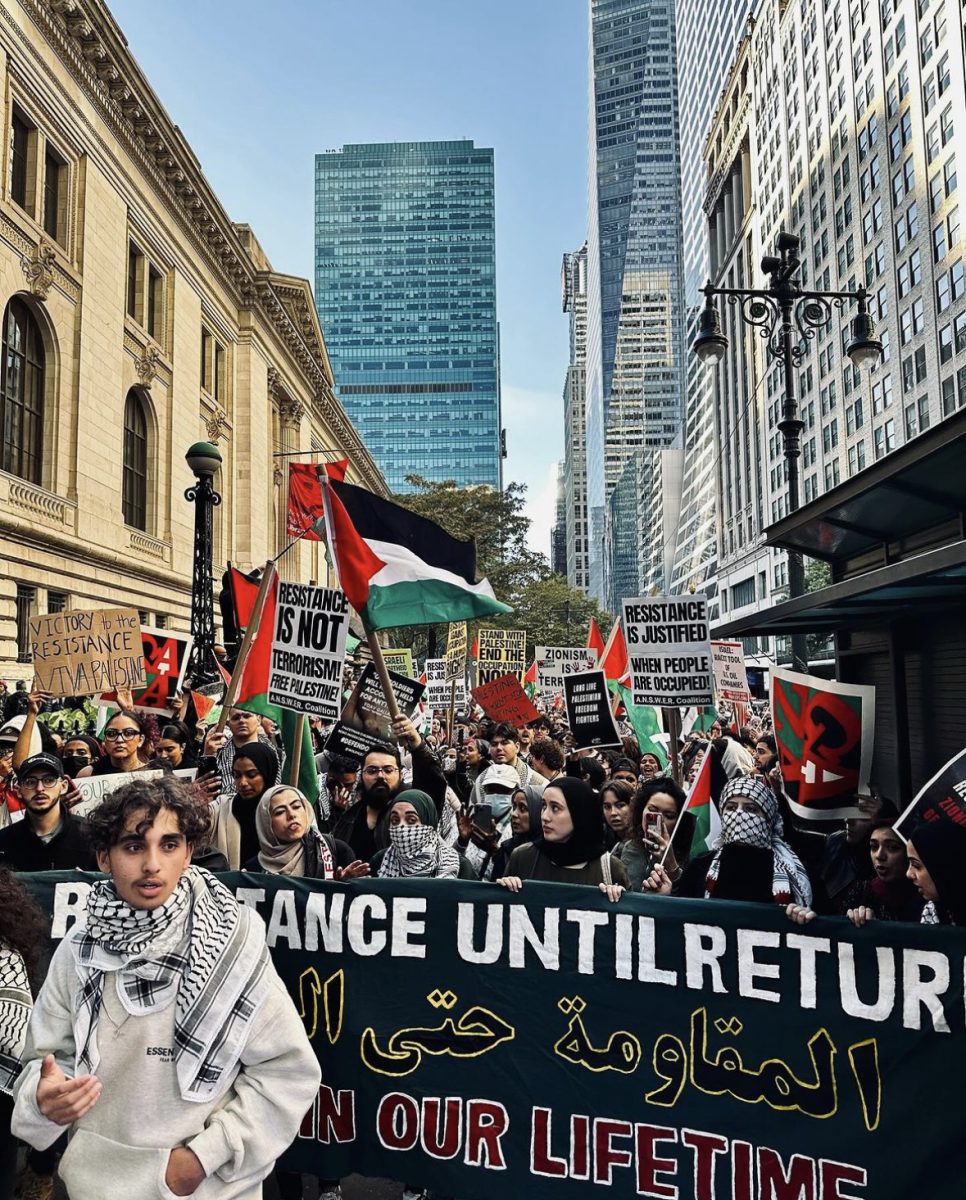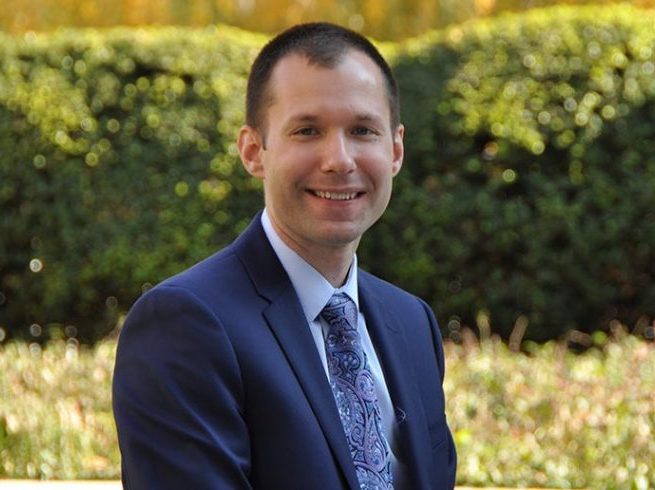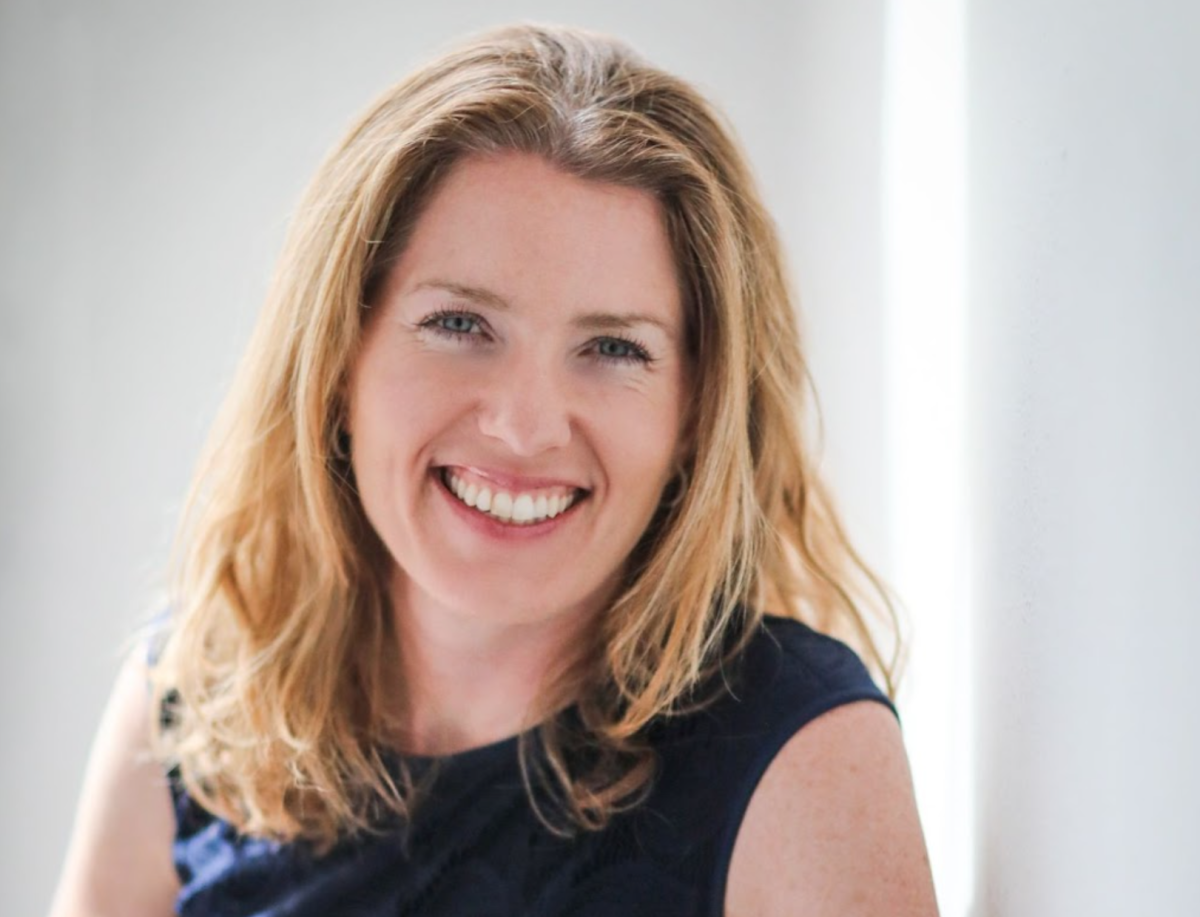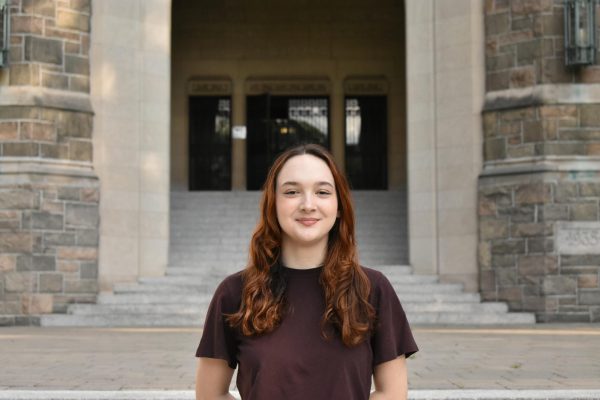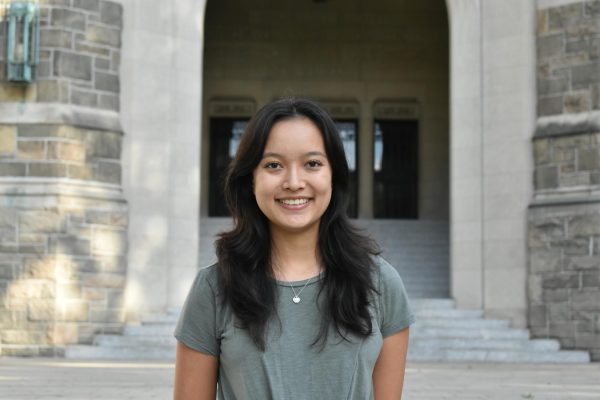On Oct. 7, 2023, the Islamic-Palestinian militant group Hamas launched Operation Al-Aqsa Flood, a series of coordinated attacks against Israel and its citizens. The attack coincided with the end of the Sukkot Jewish holiday and the 50th anniversary of the October War.
Hamas launched 5,000 rockets from the Gaza Strip and approximately 2,500 Palestinian militants “[hit] more than 20 sites in southern Israel, killed more than 1,000 people, including women and children, and abducted an estimated 150 more people,” according to the New York Times on Oct. 10.
Hamas stated they were motivated by the “desecration of the Al Aqsa Mosque as well as Israeli atrocities against Palestinians over the decades,” according to Al Jazeera. “These include the 16-year blockade of Gaza, Israeli raids inside West Bank cities over the past year, increasing attacks by settlers on Palestinians as well as the growth of illegal settlements.”
In response, Israel has launched airstrikes in the Gaza Strip — with the support of the United States — and killed over 5,000 Palestinians. Gaza is the largest city in Palestine.
“An estimated 1 million people have been displaced in Gaza in one week,” said Juliette Touma, representing the U.N. in speaking to the Associated Press.
John Entelis, Ph.D, professor of political science and Middle East studies, provided necessary historical background for understanding the conflict in full and the events earlier this October.
“The modern political Zionist concept was conceived in Europe with Theodor Herzl in the [late]-1800s,” said Entelis, “which finally gets transported to Palestine when the British have the mandate [sic] over Palestine after World War I.”
Herzl worked in Vienna as a journalist and witnessed rampant antisemitism, which pushed him to conceive the idea of a Jewish state. He published a pamphlet — “Der Judenstaat” — which is now considered a foundational text of modern Zionism.
The United Nations Partition Plan for Palestine was born in November 1947, which recommended the creation of independent Arab and Jewish states on the Southern Levant. The competing interests of Zionism and Palestinian nationalism provoked a strong response from both sides. Jewish representatives supported the idea while Palestinians and other Arab states voiced sincere opposition. The plan was never fully realized, as a civil conflict broke out amongst Palestine in the days following the official vote.
In 1948, the Arab-Israeli war began, wherein 700,000 Palestinians were displaced to neighboring Arab states and across the world. This became known as the “Nakba,” meaning “catastrophe” in Arabic. In the news today, the events happening in Gaza are considered reminiscent of the struggle in 1948.
Israel was established in May 1948 and the United States recognized the fledgling nation on the same day.
“After 1967, […] the Palestinians go on their own and engage in [sic] what was then labeled as terrorist acts,” said Entelis. “Kidnapping, hijacking planes, the Munich massacre during the 1972 Olympics… the balance between the established Arab states and Palestinian self-determination shifted because the Palestinians wanted to determine their own fate.”
On the other hand, Jewish settlers viewed Israel as their only safe haven. Jewish people have historically been “othered” in Western society — with the most drastic example being the Holocaust — but antisemitism has existed before and and continues to exist after the World War II genocide.
“The Israelis view their situation as fundamentally existential,” said Entelis. “They think: ‘we either stay here or we disappear.’”
The most commonly proposed solution to the issue of Israel and Palestine has been the two-state solution. The idea was conceived in the Oslo Accords, which was a pair of agreements that ascertained Palestinian right to self-determination (i.e. the right for Palestinians to have their own state), the Palestinian right to return (i.e. the right for Palestinian refugees to return to present-day Israel) and the evacuation of Israeli military from Palestinian territory to give way to democratic Palestinian elections. These agreements also maintained the borders of the existing Israeli state.
Both Israel and the Palestinian Liberation Organization — the official representative group for Palestine — agreed upon the terms. The first agreement was signed in 1993 and the second in 1995; shortly after, however, Israeli Prime Minister Yitzhak Rabin was assassinated by a far-right Israeli extremist. His death is considered to be representative of the death of a possible two-state solution, in part because the current prime minister — Benjamin Netanyahu — has been against the Oslo Accords since their inception and remains reluctant in the face of two-state proposals.
Entelis cited Netanyahu as “central to the problem” in the way of peace between Israelis and Palestinians. “He is the one who embedded this arrogance and [dehumanization] of Palestinians into Israel.”
Furthermore, Entelis explained that the emergence of Hamas and their rise to power is not because of a Palestinian sympathy with terrorism, but rather a “discontent with their political leaders” amongst Palestinians.
“The Muslim brotherhood appeal is often by default, rather than by design,” said Entelis. “Nobody says ‘I can’t wait to be governed by religious fanatics.’ But if they’re honest, and they try, they seem better than the alternative.” According to Entelis, Hamas, like its Lebanese counterpart Hezbollah, began as a legitimate political organization which sought to give a voice to their countries’ most oppressed peoples.
This brings us to the present day, where Israelis and Palestinians have sat at a stalemate for several years until the events of Oct. 7. Opinion amongst faculty and students vary greatly.
“It’s always been a case of occupation, case of apartheid for the past 75 years,” said the president of Students for Justice in Palestine (SJP) — who chose to only go by their title. “Our club has been dedicated to generally educating people on Palestine and committing to direct action when it comes to Palestinian mobilization and fighting for Palestinian human rights.”
SJP has been at Fordham Lincoln Center for nearly a decade now, but it was only recognized as a club for one of those years. It faced a five-year legal battle due to Fordham administrators vetoing the student government’s decision to recognize the club, which resulted in Fordham students suing the school over the decision in 2017. The court originally ruled that Fordham should recognize SJP as an official club in 2019, and the club officially operated for a year. When Fordham appealed the decision in 2020, the decision was reversed in court, thus banning SJP again as an official club.
Since the beginning of the conflict on Oct. 7, SJP’s president said that there has been more mobilization regarding how students want to involve themselves in the club. Most recently, the graduate students at Lincoln Center were approved to have their own SJP club. Currently, Fordham’s Rose Hill campus has Advocates for Palestinian Perspective.
In regards to Fordham’s reaction to recent events, SJP’s president said that SJP does not agree with President Tetlow’s statement on the recent conflict.
“It frames Muslims — it frames Palestinians as being entirely Muslim, as Muslims being sort of intrinsically tied to Palestine. Also, [it] implies — some people have viewed this — but it implies that Muslims might feel collective blame or guilt for what’s happening in Palestine. That’s not necessarily how we should be looking to the situation,” SJP’s president said.
SJP’s president added that Fordham is not doing enough to educate students, even in Middle East classes. They explained that they wanted to major or minor in Middle Eastern Studies, but one of their first required classes showed anti-Palestinian films and rhetoric.
“I feel like even the disallowing of an SJP to exist in a campus is inherently promoting ignorance within the school — inherently promotes the status quo, if not the status quo, then Israel to dominate over the Middle East and the Palestinian territories,” they said.
Overall, SJP’s president emphasized that the administrators need to take more steps to be fully aware of the situation.
“But it really is up to the decision of the administrators if they continue to want to be in the dark about what’s happening in the Middle East, you know, so I would recommend to them if they are interested in letting us or letting you know their student body actually learned something about Palestine, learn something about conflict, learn something about decolonization in history, is to allow a Palestinian club, allow Palestinians, to speak on Palestine,” SJP’s president said.
Magda Teter, the Shvidler Chair in Judaic Studies, and Sarit Kattan Gribetz, Ph.D, honor the complexity of the situation and are dedicated to helping to educate the Fordham community.
They cited that the Israeli-Palestinian conflict is a story of “the protagonists are vying [sic] for the same piece of real estate,” but there are the nuances of “religion, politics, and historical narratives.”
Reflecting on the events that unfolded on Oct. 7, Teter said that “Hamas was clearly preparing for the attack for a long time, and it was the most brutal massacre of Jews since the Holocaust.” She emphasized how extremists such as Hamas disrupt any peace initiatives and efforts towards solutions, such as the two-state solution.
In the past couple of years, there has been a change in dialogue amongst the Arab states; more of them, such as Saudi Arabia, Bahrain and Jordan, have recognized Israel and fortified diplomatic relations between their governments. However, as Israel moves to bolster their army in the wake of the events on the Gaza Strip, these partnerships have been placed on hold.
The Center for Jewish Studies, in addition to providing a minor in Jewish Studies and supporting Fordham’s Jewish students, have a surplus of resources for education on the ongoing conflict.
“Over the years, we have held many events about Israel-Palestine, Arab-Jewish relations and history, and Israel,” said Teter.
These events date back as far as 2016 and as recent as this year. Some recordings can be found on the Center for Jewish Studies’ YouTube channel. The Center also released a list of resources on their blog last Sunday. This is in an effort to broaden the community’s knowledge of not only what is happening in Gaza, but the historical context of Israel and Palestine’s decades-long struggle for mutual self-determination. The conflict between Israel and Hamas remains ongoing and the death toll on both sides continues to rise. The United Nations — as well as many politicians — are calling for an immediate ceasefire, except for the United States, who continue to supply the Israeli Defense Force with weapons.
“Some people have made comparisons with the origin of World War I,” said Entelis. “We’re not there yet — and hopefully we don’t get there.”





































































































































































































